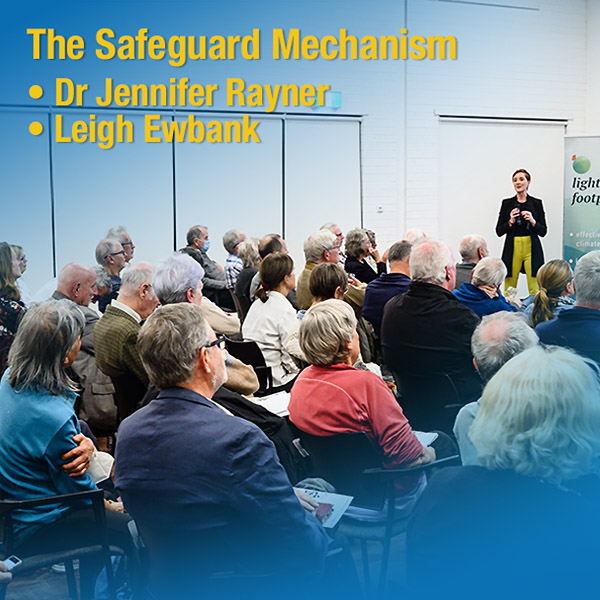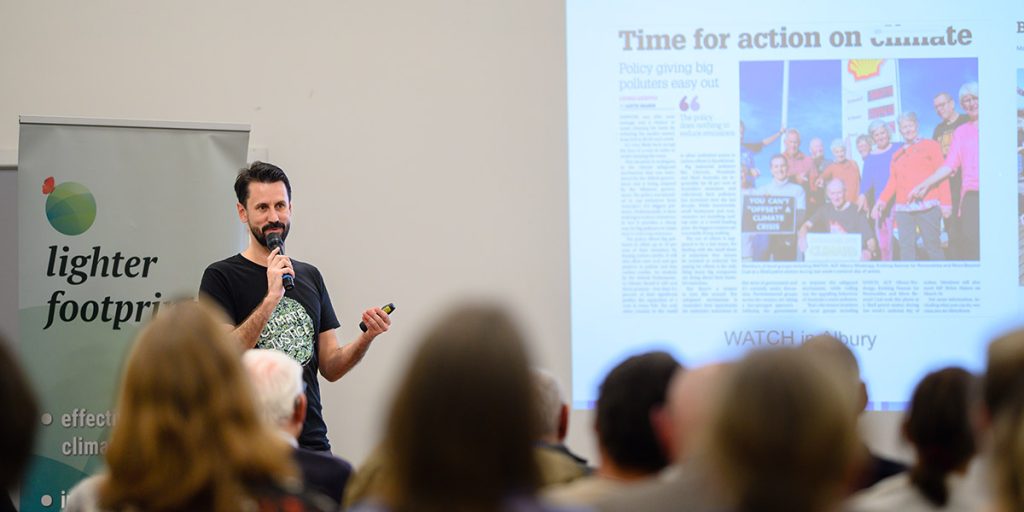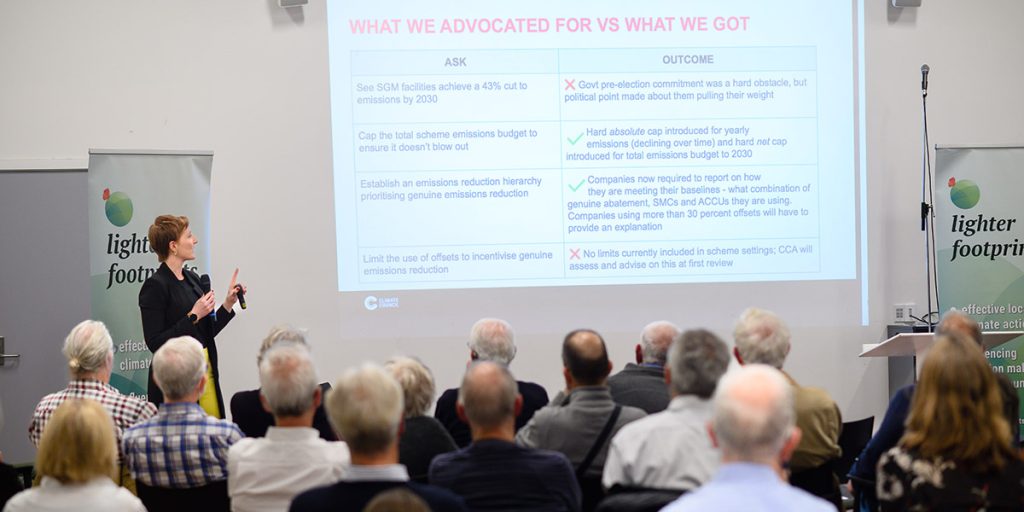An informative and enjoyable event

On Wednesday 26 April, Lighter Footprints hosted an informative meeting on Reducing Australia’s Emissions in Kew, Melbourne. It was good to meet face-to-face over drinks and nibbles and to be updated on the Dirty Dozen campaign and the Safeguard Mechanism. Thanks so much to our volunteer team!

Speakers
- Leigh Ewbank, Senior Climate Outreach Manager for Solutions, Climate Action Network Australia (Dirty Dozen campaign)
- Dr Jennifer Rayner, Climate Council’s Head of Advocacy, with particular responsibility for the Safeguard Mechanism.
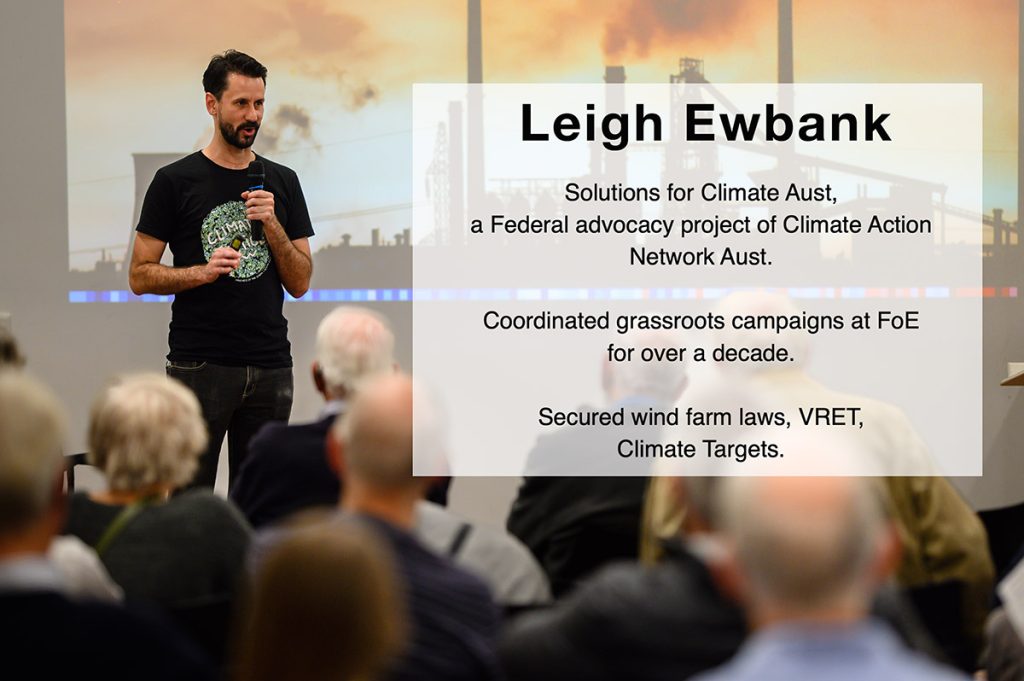

Leigh and Jennifer also responded to questions from the floor.
Presenter slides – Reducing Australia’s Emissions

YouTube video
You can watch the speakers and questions for Safeguarding our Climate here. The summary below contains links to main sections and the questions (in blue).
Reducing Australia’s Emissions event report
Here is an overview of the event including key presenter slides.
The Dirty Dozen Campaign
Leigh took us through the various key stages and strategies of the Dirty Dozen campaign which kicked off in November 22.
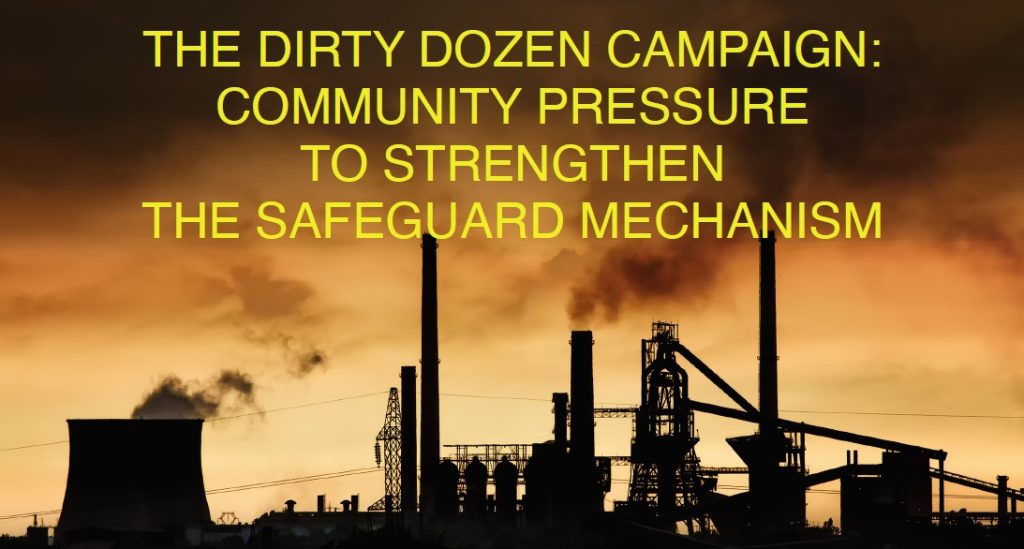
The election of the so-called more “climate-friendly” government in May 2022 provided an opportunity for the campaign.
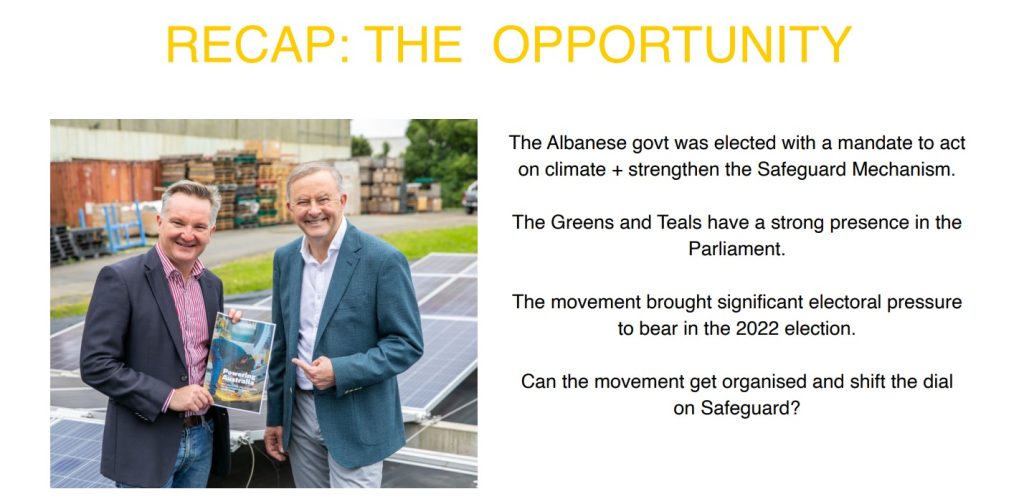
Collectively, the 12 fossil fuel giants, the Dirty Dozen, have pumped out a massive 287.8 million tonnes of harmful CO2 equivalent emissions since 2016 – that’s more than half of Australia’s total emissions for a year.

Each facility is creatively represented as a rotten egg on the Climate Council’s website.

On the website, the eggs are animated and can be “cracked open” to reveal company emission details. There are even sound effects – here is the resulting information for Chevron Australia.


Campaign Goals
The campaign focus was on ensuring the revised mechanism actually delivered real emission cuts, unlike the previous one set up by the Coalition where the bar was set above company emission levels so that they did not need to act.
Campaign goals included
- Ruling out the unfettered use of offsets
- Imposing tough restrictions on new entrants
Elevating the role of the community, and creating space for increased action
A narrative was created to capture the public imagination, framing the debate, elevating the role of the community as doing the heavy lifting on climate and claiming the moral high ground.

Sign on Letter with hand deliveries
There was great support from Australian climate/environment organisations. 48 groups signed a campaign letter which was delivered to the 12 companies and published in The West Australian, The Australian Financial Review and The Age. A response was requested by the 13 January.
Lighter Footprints letter writers got behind the campaign and many letters were published across the country.
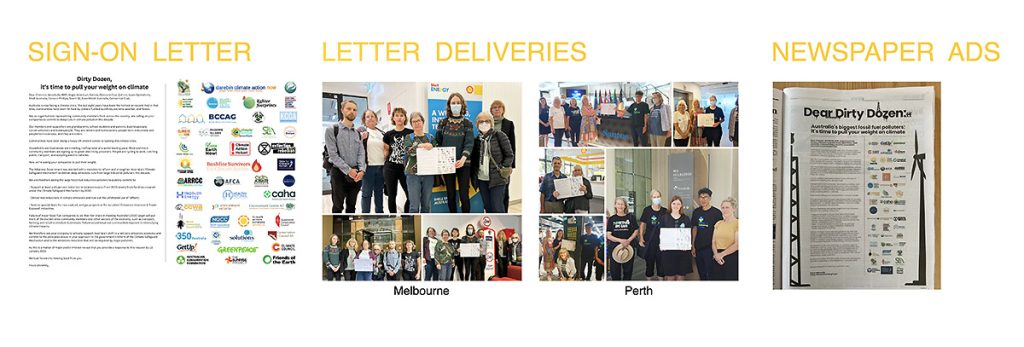
Rallies, actions, community advocacy
Rallies were held outside the capital city headquarters of the companies.
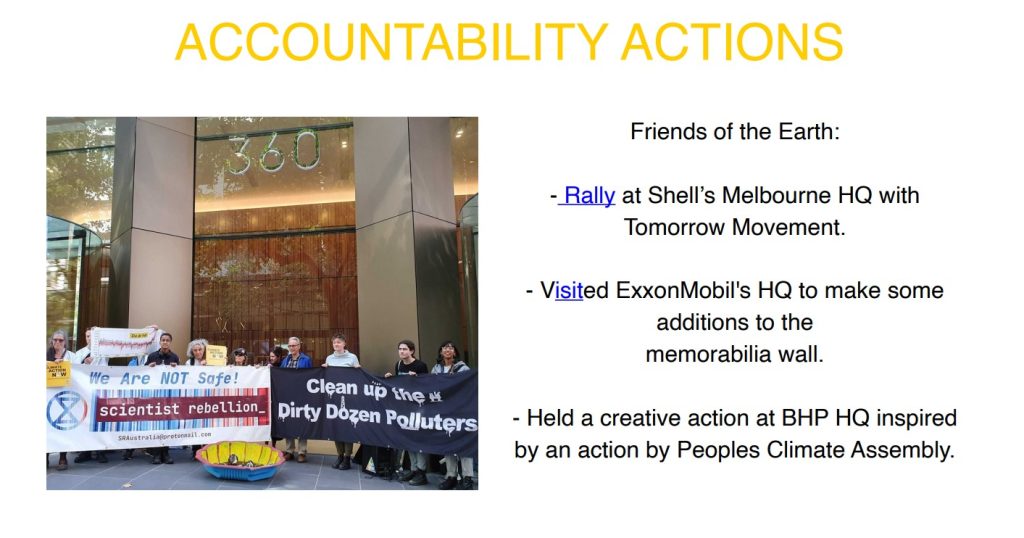
The campaign was brought to the attention of 29 MPs in key electorates through meetings in their offices. 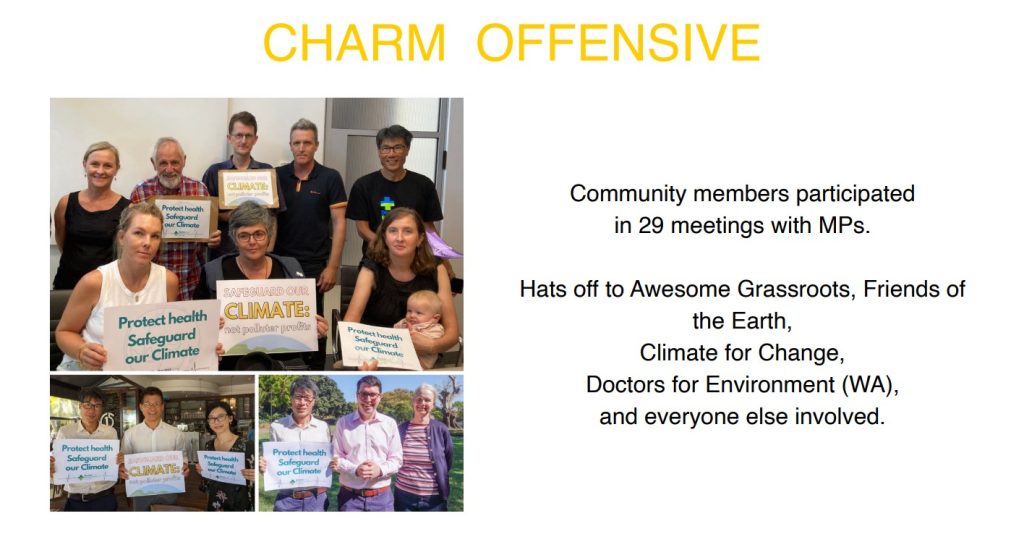
The “Peoples Climate Assembly” was present for the first sitting week of Parliament. 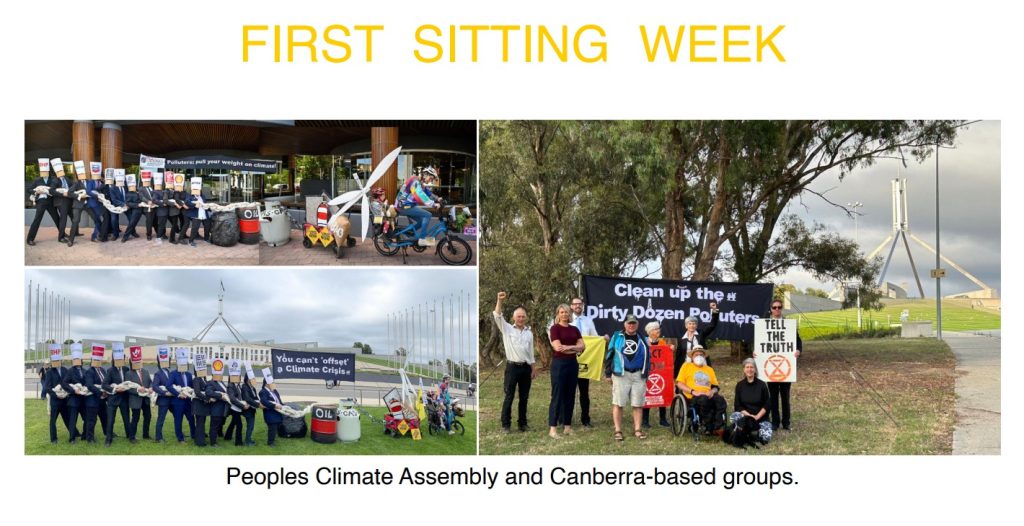
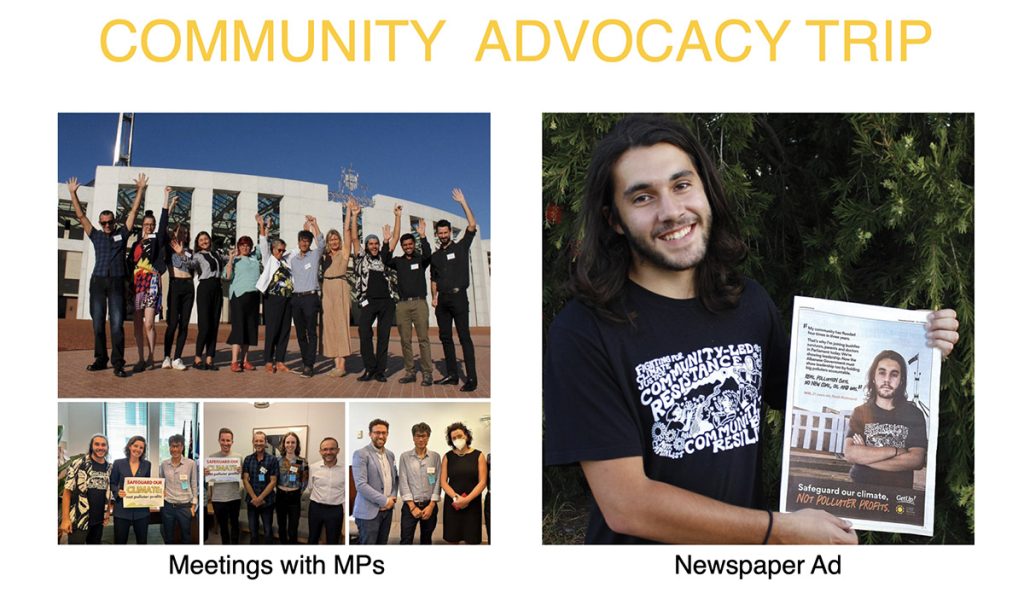
Joint submission and National Day of Action
Twenty-seven climate/environment groups, including Lighter Footprints, made a joint submission to the federal government.
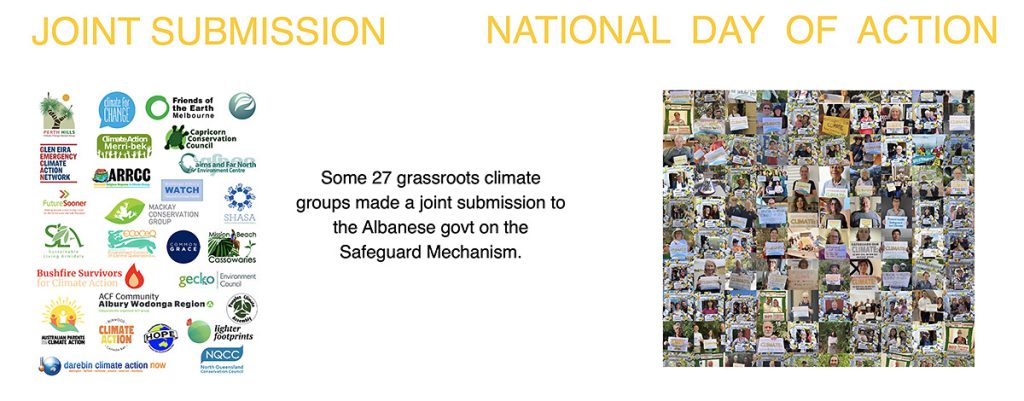
The campaign culminated in a massive National Day of Action including
- Selfie campaign
- MP meetings
- Dirty Dozen HQ actions
- Four Labor MP actions in Canberra
- Regional actions
- Banner drops
- Handing over the IPCC Report to MPs
Negotiations resulted in a stronger Safeguard Mechanism
However, we must still campaign on no new coal and gas
The Parliament agreed to strengthen the Safeguard Mechanism so that it actually reduces emissions.
The agreed plan will set a genuine limit on the amount that our biggest companies can pollute each year, and then progressively lower these limits over time until Australia gets to net zero.
That means big polluters will be forced, under law, to make genuine cuts to their emissions, and invest in technology and solutions that will decarbonise our industries and lead to a cleaner future.
A big thank you to everyone involved including Chris Bowen (Climate and Energy Minister), Adam Bandt (Greens Leader), Teal independents, Greens senators, David Pocock and others for their willingness to negotiate for a strengthened and improved outcome.
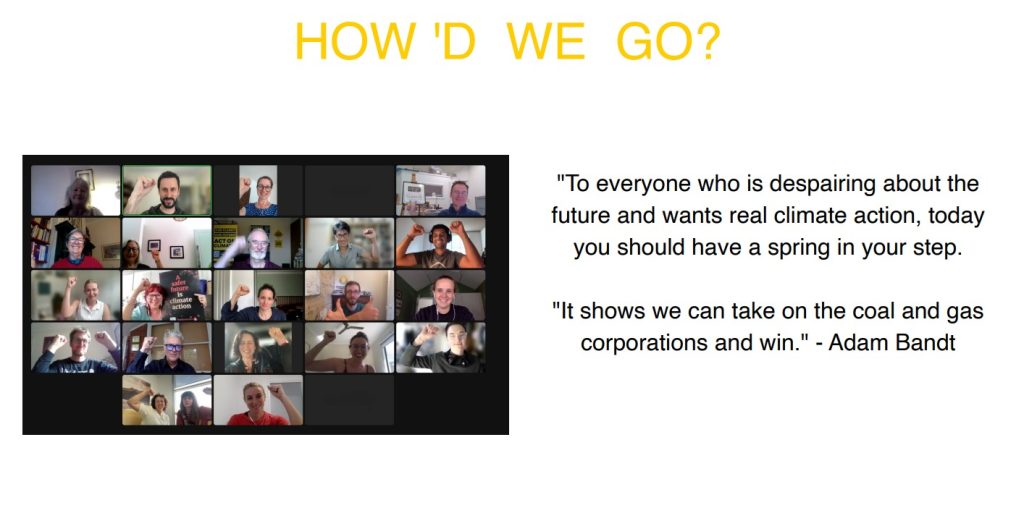
Climate Council
Amanda McKenzie of the Climate Council sums up the sentiment well in this short 1-minute video.
Dr Jennifer Rayner: What did we win on the Safeguard Mechanism?
Why the Safeguard Mechanism is important
Dr Rayner started by explaining why a strong Safeguard Mechanism was a critically important signal to business and government, as well offering the opportunity to facilitate genuine emissions reduction now with further options for increased action in future years.
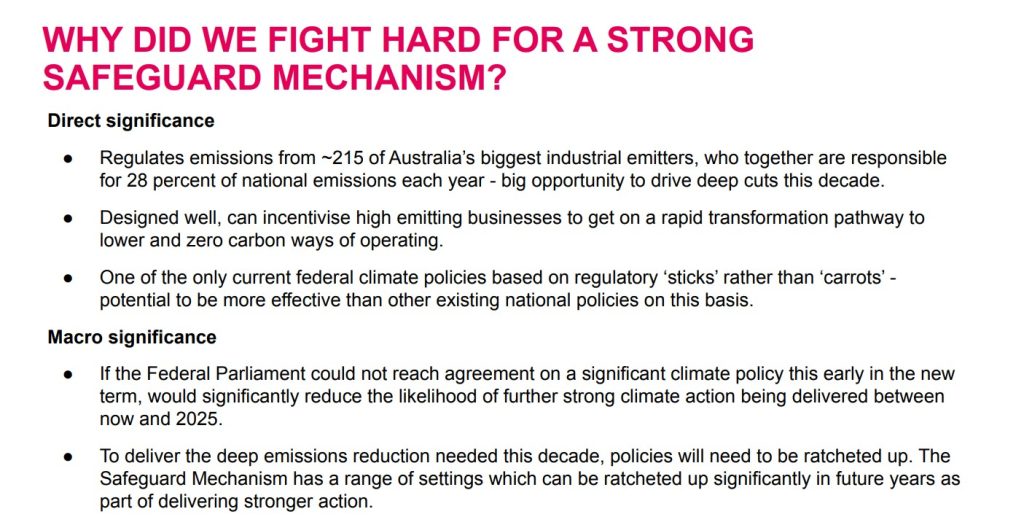
Fair share, hard caps, proportion of offsets, limits to offsets, new entrants and future-focussed industries.
The climate movement did score some wins, particularly on absolute emissions caps and on reporting requirements. Asks on big polluters doing their fair share and limits to offsets are yet to be achieved.
The Safeguard Mechanism also places tighter restrictions on new entrants, to fully offset all Scope 1 emissions, increasing the cost of doing business. The Powering the Regions Fund is to be used for future-focussed industries.
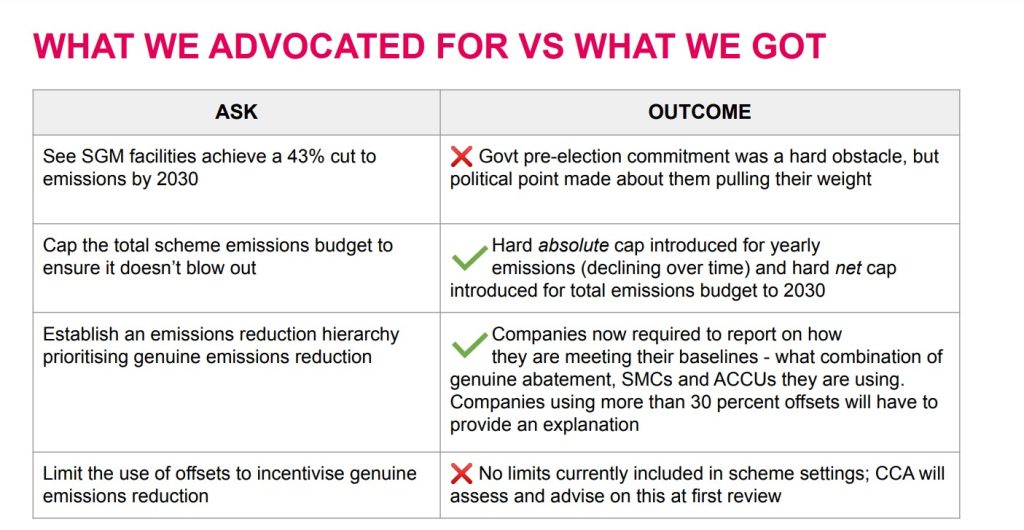
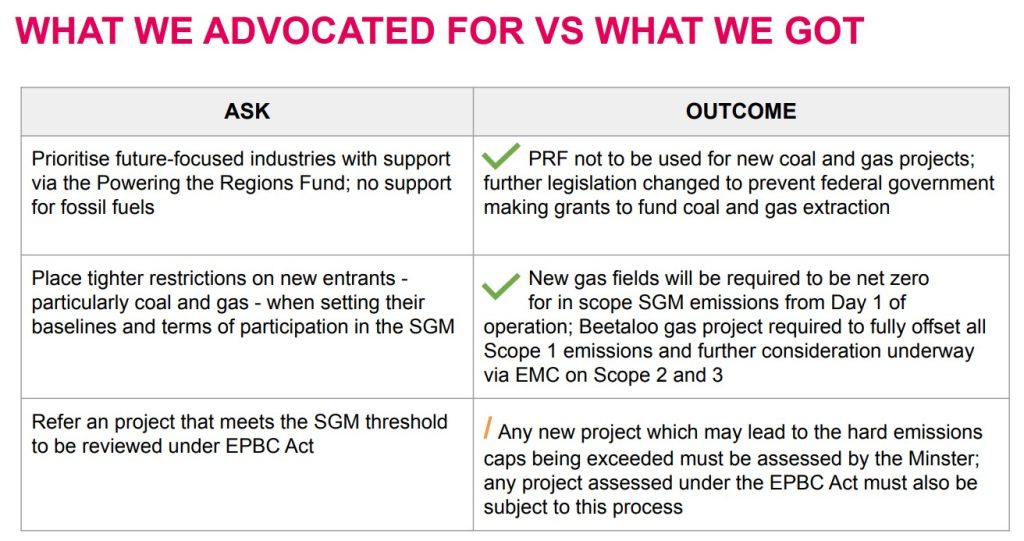
The new scheme starts on July 1, 2023
What happens next? As they say, the devil is in the detail and the regulations are still to be developed. Once the scheme takes effect on 1 July 2023 data on emissions and company actions can start being collected and monitored over time to see how much emissions actually reduce.
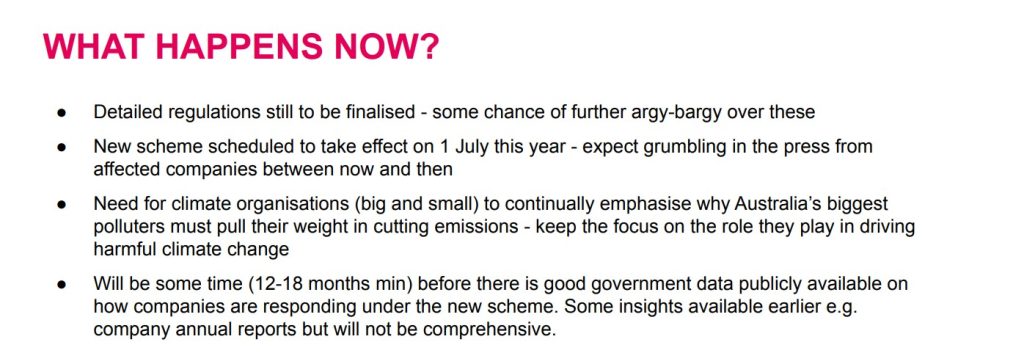

A stronger Safeguard Mechanism is just the beginning. There is still much more to fight for.
Lighter Footprints letter writers will keep the Safeguard Mechanism in the public eye and it is likely we will revisit it at a monthly event in 2024.
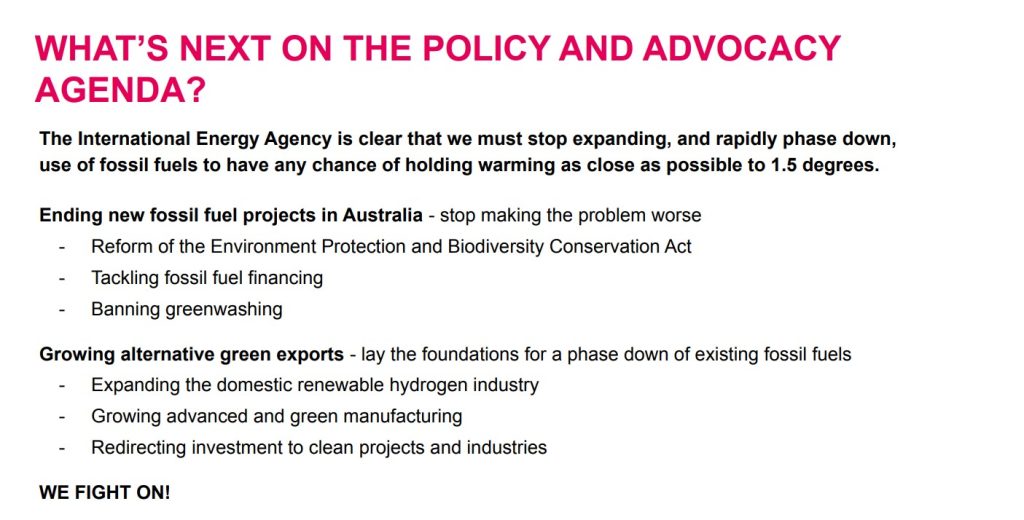
Questions and Answers

Q1 What about bipartisan engagement?
Despite, or perhaps because of the lack of engagement to the Safeguard Mechanism and reaction to this the LNP now appears to be interested in engaging with the ongoing debate about fuel efficiency – important to engage with all parties. We will need a micro campaign ahead of Senate process for Safeguard Mechanism.
Q2 Use of offsets – what to do to accelerate movement on this
The new reporting requirements will create some accountability and possibility for industry standards and comparisons.
Q3 Strengthening fossil project retirement objectives and timeline
Given that the UN and IEA say no new fossil projects from this year, we should continue to emphasize this plus find ways to ramp up alternative clean energy. We can also shine a light on corporate “net zero” which usually just mean status quo – just buying offsets. It is useful to socialise the need for real reductions, the “net” is just for “the little bit left over.”
2035 emissions reduction policy is going to be an important opportunity for the community to influence climate policy. Greens saying no new coal and gas during the Safeguard Mechanism socialised this as a key demand. Also looking at EPBC reform with a climate trigger, plus Australia’s attempt to host COP31 would put more pressure on the coal industry.
Insights from being an advisor is that Governments are very focussed on keeping power affordable and available during transition. It is important for community to give government confidence that lights are going to stay on, for instance through onversations and actions on market and energy mix shifts, and investment.
Chubb review looked at confidence in offsets. There will be a need for some residual offsets for difficult industries. However the biggest harm comes from Scope 3, fossil projects exported emissions, and offsetting their Scope 1 won’t change that. We need permanent emissions reduction by moving away from fossil fuels.
Q6 Prevention of use of dodgy offsets those recently publicised in PNG?
It’s hard to have confidence in international offsets, which are only used in the voluntary market, not in this regulated part of the market.
Q7 What about incentives for farmers?
The issue is not enough land for full scale land based offsetting – need reductions in emissions.
Yes even though we might be able to more permanent drawdown with rock weathering techniques, we have to stop adding fuel to the fire and reduce emissions.
New developments
Since this event, there have been two major developments: A National Net-Zero Transitions Authority has been announced and the Federal Budget has been delivered.
The Climate Council has described climate funding in the Federal Budget as ‘a warm-up lap in history’s most important race’.
“While the Budget contains welcome temporary power bill relief and measures for some households and businesses to tap into renewables, it doesn’t meet the scale of the climate emergency Australia faces.”

